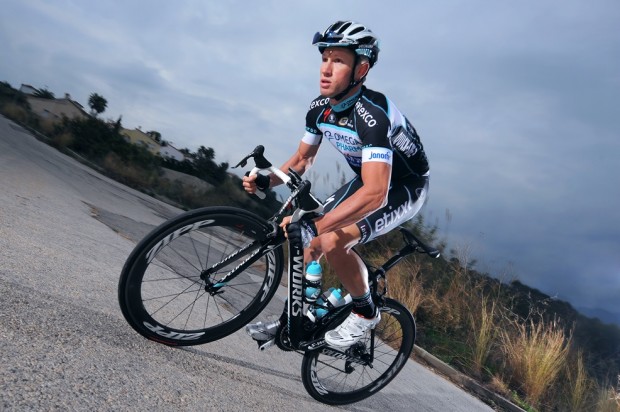In praise of the lead-out man
The role of the lead-out man is well understood by close observers of professional cycling, but for the public at large, it is the rider with his arms thrust skywards as he crosses the line who commands the greatest attention. While Marcel Kittel’s name dominates the headlines after the final stage of the Dubai Tour, it was the work of his pilot fish, Tom Veelers, and of Mark Cavendish’s right-hand man, Mark Renshaw, that delivered a fascinating sub-plot to the more easily understood narrative that might be summarised as Kittel 3 – 0 Cavendish.

Veelers emergence from the writhing mass of a peloton in full flight was a surprise to Kittel, if not to his Dutch helpmeet. Kittel, like Cavendish (and Greipel) is careful to praise the men who lead him to victory and spoke with genuine admiration of Veelers whose appearance ahead of him he described as one made “out of nowhere”. Cavendish and Veelers are less likely to form a mutual admiration society after the pair clashed in the finale of stage 11 at last year’s Tour, but as a professional, he cannot help but appreciate Veelers’ service for Kittel today.
Mark Renshaw’s move to Omega Pharma-QuickStep was arguably the biggest transfer story of the closed season just ended, and ‘Prince Harry’ found himself thrust into the spotlight again today when Cavendish’s misfortune left him as the only man in OPQS colours to contest the sprint against Kittel. It proved to be an uneven contest, however, underlining again the divergent roles of lead sprinter and final lead-out man. When it works, the partnership is a beautiful thing: witness today’s triumph for Kittel and Veelers, or the seemingly telepathic understanding between Lotto Belisol’s Andre Greipel, Jurgen Roelandts, and Marcel Sieburg at the Tour Down Under. Cavendish and Renshaw have shared similar successes in the past. Few would bet against them doing so again.





